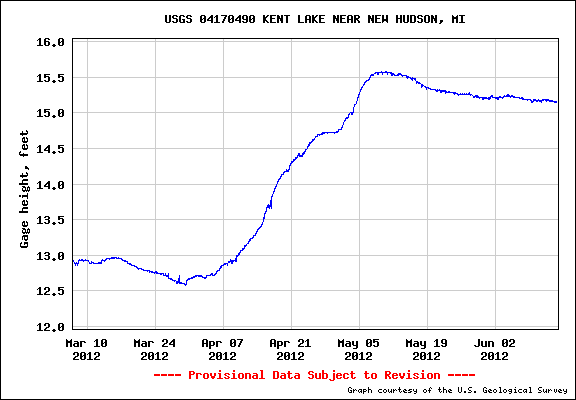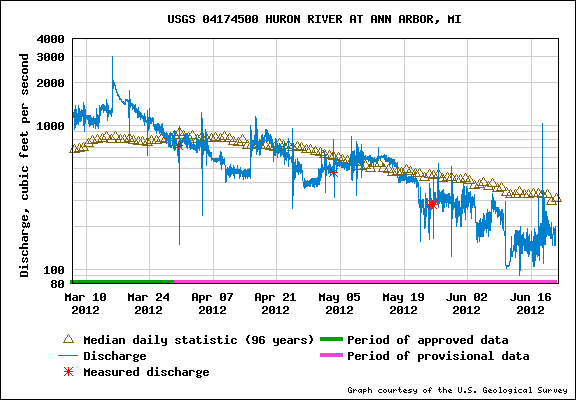I recently did a survey of USGS gage stations in the watershed. I noticed a couple interesting things. First, most are below average for this time of the year. It’s been dry, no surprise. Next, take a look at the Kent Lake level at the dam for the past quarter. One can observe how the Huron-Clinton Metropark Authority (who manages the Kent Lake Dam) allowed the lake to fill 3 feet over the span of about a month, and are now operating at “run of the river.” Three feet represents quite a volume in Kent Lake, and holding back that flow undoubtedly altered flow levels downstream until early May. Thankfully, it was done slowly so the effect would be minimized.
Levels downstream are somewhat below average, though. See the Huron @ Hamburg Rd. (between Ore and Strawberry Lakes). It is just below the 25th percentile for the 60 year record. This means that the river flow is among the 25% lowest for this time of year over the last 60 years. The result is much less supply for Strawberry Lake and other lakes in the Chain of Lakes that do not have managed water levels. It also contrasts with the last two years, which were wetter than average.
Further downstream in Ann Arbor, the river is even more below average rates. That station is well below the 25th percentile based on almost 100 years of recordings. It is also important to recognize the extreme fluctuations at this point in the river. Due to its location below a series of two dams and several large stormwater outfalls, the river experiences erratic flows that can take it from 150 cfs to over 1000 cfs and back again in the span of a few hours! These unnatural flow patterns make it difficult for aquatic life to survive and could pose a hazard to anyone in the river at that time.
In general, it looks like most of Michigan is seeing the same dryness. The state map shows conditions of USGS gage stations across the state prior to this week’s small rains. Red and orange are exhibiting below average flows, and green is within an average range. Flows have recovered somewhat with the rains, but will soon diminish again if it remains dry. Given the lack of snow this winter, we may be in for a long, dry summer.







